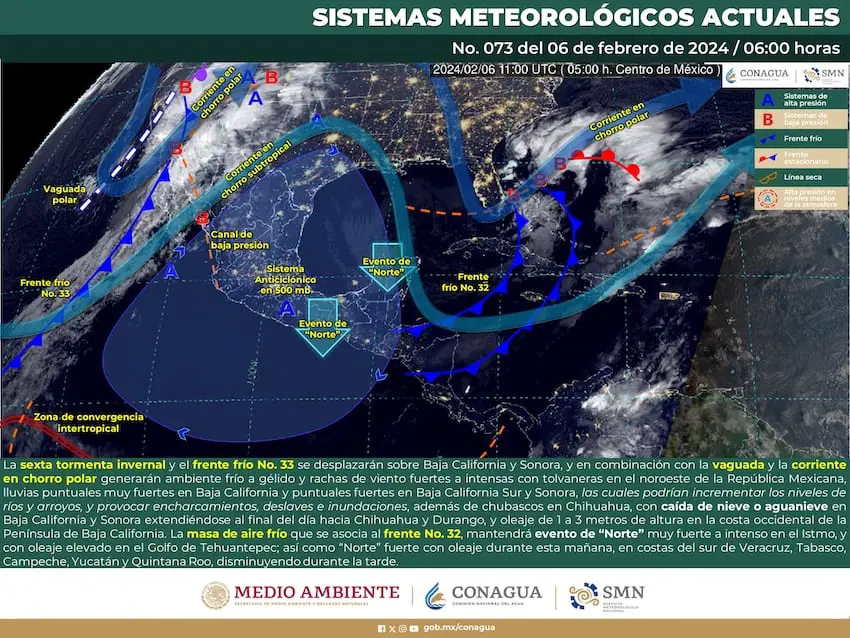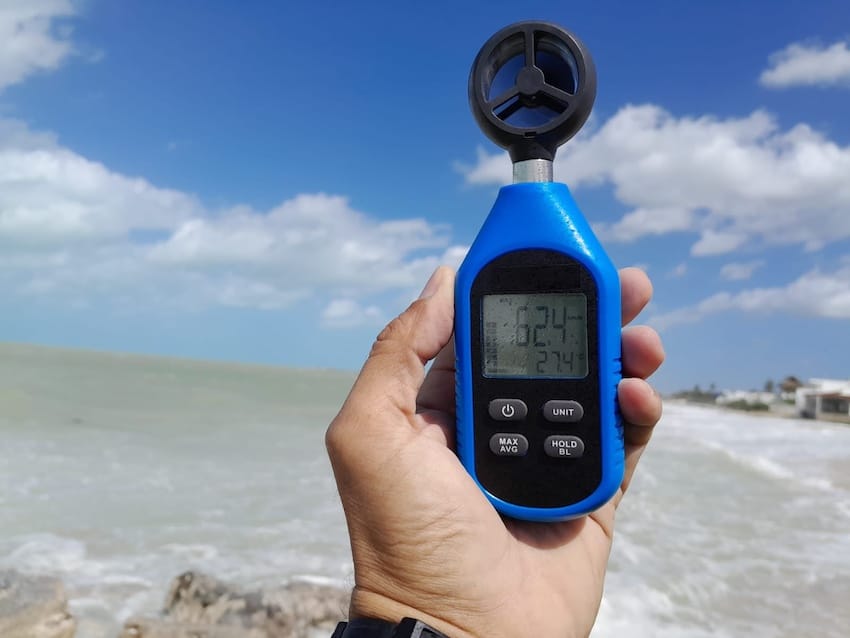Baja California and Yucatán, two of Mexico’s most popular destination regions for international tourists, have been affected by strong winds and heavy rain since Sunday.
The National Meteorological Service (SMN) has reported that the sixth winter storm of the season, along with Cold Front 33, is affecting the state of Baja California, while Cold Front 32 and its associated “North” phenomenon are primarily affecting the Yucatán Peninsula.

A “North” event refers to a type of extreme weather event that takes place in Mexico during the autumn and winter. As cold fronts move down into the country from the United States, they can strengthen until reaching wind speeds of up to 100 kilometers per hour. Norte events generally happen in regions along the Gulf of Mexico.
According to the SMN, Tuesday will see Cold Front 33 move over Baja California and Sonora, combining with a polar jet stream which will potentially cause sleet in Baja California, Sonora, Chihuahua and Durango and heavy rainfall of up to 3 inches per hour in Baja California, Baja California Sur and Sonora.
On Monday, local authorities in Tijuana declared a state of alert ahead of the storm, urging residents to stay home and avoid unnecessary outings.
Given its proximity to the U.S. state of California which is severely affected by a winter storm causing historic levels of flooding and snowfall, Baja California is also expected to see an increase in river and stream levels, as well as flooding and landslides.

Starting Thursday, the season’s sixth winter storm will move up out of Mexico and into the central part of the U.S. while causing isolated rain in Mexico’s northeast.
Moving south, heavy rain and strong gusts of wind have caused flooding and fallen trees in some areas of Quintana Roo, particularly in the north. Videos circulating on social media also show seawater flooding the streets of Holbox Island and men navigating the flooded streets in kayaks.
“We continue to work intensely and in close collaboration with municipalities to address all reports received by citizens,” Quintana Roo’s State Coordination of Civil Protection (Coeproc) said in a statement, calling on residents to take precautionary measures.
On Tuesday morning, the governor of Quintana Roo, Mara Lezama, urged residents to take precautions as the Norte event is expected to cause wind gusts of 50 to 70 kilometers per hour, waves as high as 2 to 4 meters and drift currents in bays, docks and beaches, as well as sea ingress into low-lying areas.
The SMN has also warned residents of the Yucatán Peninsula to beware of falling poles, billboards, trees and palapas due to the potential impact of the Norte event.
On the other hand, a mid-level anticyclonic circulation is expected to form over the Mexican Central Pacific, resulting in clear skies and warm evening temperatures of 35 to 40 degrees Celsius in Colima, Guerrero, Jalisco, Michoacán and Nayarit. In Sinaloa, Morelos and southwestern Puebla, as well as on the coasts of Oaxaca and Chiapas, temperatures will be slightly cooler, ranging from 30 to 35 degrees Celsius.
With reports from El Universal, La Jornada Maya, Zeta Tijuana and Infobae
